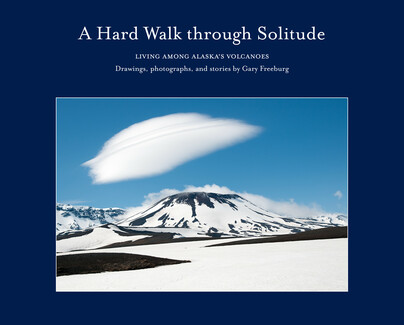
Format: Hardback
Pages: 192
ISBN: 9781960521033
Pub Date: 15 Oct 2024
Illustrations: 84 illustrations, including 27 graphite drawings and 55 color photographs by the author
Description:
The volcanoes on the Alaska Peninsula and the fifty-seven volcanoes that project into the Aleutian Islands form the northern rim of the Pacific Ring of Fire. Many are in Alaska’s national parks, monuments, and preserves. They continue to erupt, creating new Earth surfaces, and the deposits of lava, pumice, and ash ejected by these volcanoes create primeval ground: a true wilderness where few people on Earth other than volcanologists have traversed.
Gary Freeburg has wandered and lived among Alaska’s volcanoes for regular periods during the last twenty years. The volcanoes he visits are alive and in some cases still steaming, and its lands are coarse and free of distraction: a vacuum of emptiness that embraces solitude and silence stirred only by the winds that blow and the rains that fall. The Earth surfaces that he walks are hard and largely barren of plant life, except where surfaces are shielded by the wind or are near water sources. There, new life returns in the form of lichen and tiny plants and insects and animals—bees, bear, fox, mayflies, and Alaskan hares—taking their rightful place in these vast, remote national parks, monuments, and preserves, reminding us that they are signs of hope that Earth will continue to evolve, regenerate, and renew itself long after we humans are gone.Freeburg’s writings, photographs, and drawings reflect what it is like to seek solitude and live among Alaska’s wild volcanoes. His travels were mostly solo treks in which he was flown in with supplies, a camera, sketchbooks, and journal to share his thoughts and artistically render his experiences. Each day spent in Alaska’s volcanic wilderness affirmed the importance of this place for the author and those who can only dream of such a place. His book seems to explain: How fortunate it is to have magical places and national parks like Alaska’s volcanoes, how fortunate we are to be alive on this magnificent Earth.
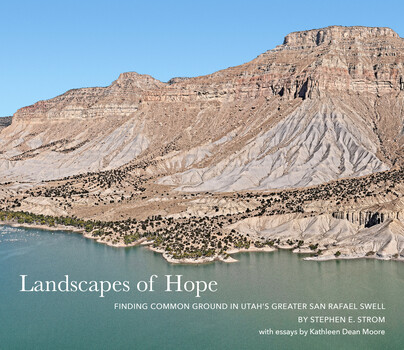
Format: Hardback
Pages: 176
ISBN: 9781960521040
Pub Date: 15 Oct 2024
Illustrations: 84 illustrations, including 73 color photographs by the author and 11 color maps
Description:
At a time when division, polarization, and antagonisms pervade the United States, here is hope for the future. Landscapes of Hope shows how people from all walks of life and backgrounds can come together, talk and work out details, compromise, and do something special for generations to come: safeguarding 900,000 acres of spectacular wild country in Utah.Perched on the western edge of the Colorado Plateau, the Greater San Rafael Swell spans 8,000 square miles in south-central Utah and showcases a rich tapestry of landscapes.
Its colorful geological strata span 350 million years of Earth’s history and contain a remarkably well-preserved fossil record from times when primitive marine species first emerged, to the era of dinosaurs and the appearance of large mammals. The region’s arid climate and isolation have also worked together to preserve cultural artifacts left by Indigenous peoples who occupied the area for more than ten millennia.As the treasures of the Greater San Rafael Swell became widely known during the 1960s, conservationists undertook campaigns to designate large tracts of public lands in the region as wilderness, where “the earth and its community of life are untrammeled by man, where man himself is a visitor who does not remain.” Initially, some residents of Emery County, located at the heart of the Greater Swell, strongly opposed these efforts, concerned that wilderness designations could limit ranching and mining, undermine residents' livelihoods, and sever their cultural ties to the lands.At first, reconciling these opposing views seemed impossible, but, starting in the late 1990s, Emery County leaders and residents engaged a wide spectrum of stakeholders in discussions spanning more than two decades. In 2019, their efforts to find common ground culminated in the passage of the John D. Dingell Jr. Conservation, Management, and Recreation Act. This comprehensive federal legislation designated substantial portions of public lands for multiple uses, while creating twenty-five new wilderness and other protected areas, safeguarding nearly 900,000 acres.Landscapes of Hope celebrates the commitment of those who take rightful pride in their legacy and who forged the legislation, conserving landscapes of extraordinary beauty and profound cultural importance. The fruits of their endeavors are portrayed in photographs and stories that showcase the sublime grandeur of the areas now protected in perpetuity.

Format: Hardback
Pages: 200
ISBN: 9781985900929
Pub Date: 08 Oct 2024
Series: Appalachian Futures: Black, Native, and Queer Voices
Illustrations: 1 map, 11 b&w illustrations, 112 color illustrations
Description:
"Affrilachia," a term first coined in 1991 by Kentucky poet Frank X Walker, refers to the cultural contributions of African Americans who live in Appalachia, a largely mountainous region stretching over thirteen states from Mississippi to New York. Although Black Americans have greatly influenced the popular culture landscape in this region, their stories, trials, and triumphs are often undocumented because Appalachia is perceived as wholly white.In this stunning visual history, photographer and curator Chris Aluka Berry gives voice to the broad spectrum of African Americans who have lived in the Appalachian region over the centuries.
Berry, who spent six years in western North Carolina, northeast Georgia, and eastern Tennessee, immersed himself in the communities and lives of Black Appalachians to present the diversity and commonalities of the proud people in the region. His intimate and revealing photographs capture Arican Americans in various settings—churches, homes, revival services, family gatherings, and homegoing celebrations.Completing this comprehensive collection are powerful narratives from the people who inhabit these places, and contributions from Appalachian writers Kelly Navies and Maia Surdam, whose poignant and powerful poems and essays offer historical perspective and broaden the book's archival importance.The first book of its kind, Affrilachia: Testimonies is an inspired historical artifact that honors, represents, and celebrates the proud people of color whose history and existence has greatly contributed to the broad tapestry of Appalachia.

Format: Paperback
Pages: 160
ISBN: 9781913645724
Pub Date: 15 Sep 2024
Illustrations: 65
Description:
This vibrant catalogue showcases a decade’s work by Memphis-based Peruvian-American photographer Andrea Morales (b. 1984), whose camera sympatheticallydelves into community life and activism in the American South. It accompanies herfirst major exhibition at the Memphis Brooks Museum of Art, represents the firstscholarly publication on her work, and the first major museum exhibition dedicatedto movement journalism.
The unofficial capital of the Mississippi Delta, Memphis, Tennessee, has long been aplace bubbling with activism and social movements. Roll Down Like Water – a nod to Dr.Martin Luther King, Jr.’s iconic last speech in the city in support of the 1968 SanitationWorkers’ Strike – shows Andrea Morales’s incredible ability to engage with her subjects,in Memphis and the surrounding region, through the lens. From intimate portraits andrecords of daily life to the documentation of social and environmental movements withlocal and national resonance, her photography builds a passionate and tender portrait ofthis unique part of the American South.The energy vibrating through Morales’s stills is the energy of the people themselves:the artist centres her practice on building long-term relationships with the communitiesshe photographs, and views this relationship as one of collaboration rather thandetached observation. Her approach is informed by ‘movement journalism’, whichrecognizes that journalism, like the camera, is not totally objective: behind laptops andlenses are people, institutions and systems that hold and wield power, for good or ill.By establishing a human connection between chronicler and people and rooting it inan ethical and rigorous framework, Morales’s ‘community-driven visual storytelling’reaches beyond historical injustice to capture the liveliness and joy of the communitiesshe photographs.For Memphis, and Morales, King’s words loom large. Echoing his descriptionof collective liberation as ‘an inescapable network of mutuality, tied into a singlegarment of destiny’, Morales’s captivating images of the American South inmoments of turbulence, stillness, darkness and beauty chart new, sustainable pathsin photojournalism, while reflecting upon identity, community and the power ofstorytelling.
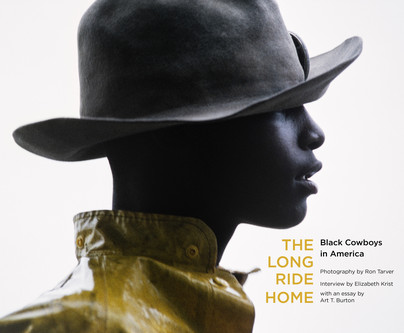
Format: Hardback
Pages: 160
ISBN: 9781960521026
Pub Date: 15 Sep 2024
Illustrations: 133 photographs (99 color and 4 black-and-white)
Description:
The Long Ride Home: Black Cowboys in America is the first book to tell the story of the Black cowboy experience in contemporary America. Although Black cowboys have been a fixture on the American landscape and frontier since the nineteenth century, few people are aware of their enduring contributions to the history of the West and how their unique culture continues to thrive today in urban as well as rural areas all over the country.The book features Ron Tarver’s beautiful, compelling, and often surprising contemporary images of African-American cowboys that not only convey the Black cowboy’s way of life and its rich heritage, but also affirm a thriving culture of Black-owned ranches and rodeo operations, parades, inner-city cowboys, retired cowhands, and Black cowgirls of all ages, too.
Tarver, who grew up in a family of Black cowboys in Oklahoma, uses his artistry to question, if not upend, long-held notions of what it means to be a cowboy and, with that, what it means to be an American.The Long Ride Home couldn’t be more timely, coming on the heels of films such as Lil Nas X’s hit time-travel western, Old Town Road (2019), and Idris Elba’s Concrete Cowboy (2021), which was based on Greg Neri’s Ghetto Cowboy (2013), about Philadelphia’s contemporary African-American cowboy culture. Many of Tarver’s images were made in some of the same Philadelphia neighborhoods. Widespread interest in the Black experience in America will also make this book an especially important contribution to Black history.In addition to Tarver’s photographs, The Long Ride Home includes an essay by Art T. Burton, an expert on the history of Black cowboys. This book is both a tribute to and celebration of the Black cowboy in America. It is certain to be an invaluable addition to American history for years to come.
Preservation in Action
Ten Stories Of Stewardship: Restoration, Rehabilitation, Renovation, Adaptation, and Reuse
Format: Paperback
Pages: 216
ISBN: 9780819501462
Pub Date: 03 Sep 2024
Illustrations: 102 color photos
Description:
A one-of-a-kind tour through exquisitely preserved, chronicled and illustrated historic buildings/>/>Preservation in Action is the first publication that tells the compelling story of Old Wethersfield, Connecticut's largest and oldest historic district in its oldest town. Based on original research, with stunning photography and handsome design, through ten examples of restoration, rehabilitation, renovation, adaptation, and reuse, it demonstrates the community's efforts over more than a century to preserve the architectural legacy of its historic village, through individual and institutional commitments, civic planning decisions, historic preservation, and design review./>/>The examples range from the oldest house in town, with a 17th century addition added thirty years ago, to a 19th century commercial building whose greenhouse was repurposed as a cafe in 2022 and includes the town's old high school whose redevelopment, in a bold partnership between the Town and the Historical Society, together with the Society's redevelopment of another town owned building, has spurred the economic revival of the old village.

Format: Hardback
Pages: 136
ISBN: 9781913645717
Pub Date: 15 Jul 2024
Imprint: Courtauld
Illustrations: Approx 80 illustrations
Description:
Self-taught and influential in the advocacy of photography as an art form, Mayne was passionate about representing human life as he found it – most famously, in his street images of low-income communities in West London. Capturing children at play and the emerging phenomenon of the ‘swaggering teenager’, Mayne discovered in the young a defining energy that perfectly embodied both the scars and the vitality of post-war Britain.The exhibition of more than sixty photographs brings together a selection of Mayne’s iconic London scenes with later, almost entirely unknown intimate portraits of his own family in rural Dorset.
While these two strands have a different tenor, they share Mayne’s radical empathy and his evident desire to create images with lasting impact, sensitivity and artistic integrity. With those pictured from the 1950s now in their senior years and a new generation of young people faced with myriad crises, Mayne’s images of childhood, adolescence and family feel especially poignant and timely.The catalogue is richly illustrated and includes an original essay by Jane Alison and an interview with Mayne’s daughter, Katkin Tremayne.
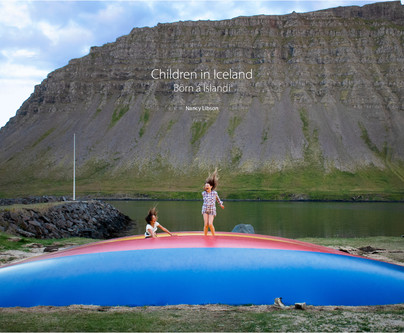
Format: Hardback
Pages: 96
ISBN: 9781938086526
Pub Date: 01 Jul 2024
Illustrations: 47 color photographs by the author
Description:
Iceland is best known for its stunning scenery and majestic landscapes. When photographer Nancy Libson first visited Iceland for a hiking trip some twenty years ago, she immediately fell in love with the country and its dramatic landscape. She vowed to return again, camera in hand.
Beginning in 2015, Libson did just that, revisiting Iceland for four additional summers to photograph the land and its people.When Libson began her project, she chose to get to know the Icelandic people in rural areas. As she continued to experience this remote and beautiful land, she developed an awareness of the unique qualities of childhood in Iceland, and so her emphasis shifted from people of all ages to children at home and at play. Libson noticed that Icelandic children were granted an unusual level of freedom while living securely in close-knit families and supportive communities. She was further inspired to capture Iceland’s remoteness and beauty and its impact on the children who live there.As portrayed in Children in Iceland, Libson’s photographs provide an intimate and evocative view of the lives of the children surrounded by Iceland’s natural landscape. By photographing Iceland’s children, Libson began to better understand not only the children, but through them the culture and spirit of growing up in this remarkable country. The book is further enhanced by an afterword by Kristín Helga Gunnarsdóttir, the well-known Icelandic children’s author, who shares her thoughts about the freedom that Icelandic children feel from living with and close to nature.

Format: Hardback
Pages: 168
ISBN: 9789152793886
Pub Date: 21 May 2024
Imprint: Ukrainian Warchive
Illustrations: Colour and black and white
Description:
"The stories and testimonies in this book are not only photographs. They are beautiful, brutal, present, and personal – photographic adjectives, filled with content that is deeper and more relevant than most news photography can ever hope to be. But, perhaps most importantly, they are historical documents, visual evidence to be presented in a future where the fog of war has cleared.
And just ice once again prevails." Swedish Photojournalist Paul Hansen wrote in the foreword for the book. In it, he emphasises the relevance of the images, the depth these testimonies bring to the reader, and how they initiate a deeper conversation about the impact of military violence on Ukraine.Ukrainian Warchive published its first book 13 Stories of War to mark the second year full-scale Russian invasion.The book features individual visual essays accompanied by text created by 13 Ukrainian photographers and artists, members of the Ukrainian warchive. Their photographic testimonies are beyond conventional narratives and together with text they give readers a nuanced and personal perspective that goes beyond typical media coverage. The essays delve into themes of resistance, loss and hope and provide a vivid account of the human experience in the midst of war."Despite the backdrop of ongoing military violence, these documentary photographers and artists have been courageously living, working, and sharing the realities of Ukraine with the world since the Russian Invasion. As the photo editor, curating these powerful photo stories represents the photographers’ resilience and resistance to me. Each essay varies in approach, style, and subject matter. We chose to pair each essay with personal texts to convey awareness and immediacy." - says Emine Ziyatdinova, co-editor of the book and director of the Ukrainian Warchive.The book has been supported by the Institute for Human Sciences in Vienna (Institut für die wissenschatten vom Menschen, I M) within the Documenting Ukraine program, the Hasselblad Foundation, and the Swedish Institute.

Format: Hardback
Pages: 184
ISBN: 9781938086984
Pub Date: 10 Mar 2024
Illustrations: 210 color illustrations: 125 photographs and 85 digital montages by the author
Description:
In his award-winning book, American/True Colors, Stephen Marc presents one of the most comprehensive photographic surveys ever conducted about America and Americans. For his efforts–the survey includes both the Obama and Trump presidencies–or his artistry, and for his unique African-American perspective, the Independent Publishers Book Awards gave American/True Colors its 2021 Gold Medal for the Best Book of the Year in Photography.But Stephen Marc was not finished with telling the American story.
In Street Cat Tales and Tangled Times, the artist takes us on another sweeping journey, coast to coast, this time straddling before and during the COVID years when America and Americans were confronted by a multitude of unprecedented challenges that affected citizens in every aspect of life no matter where they might live.Introduced by Dr. Carla D. Hayden, 14th Librarian of Congress and the first woman and first African American to hold that distinguished post since its founding in 1802, and featuring 210 new photographs by Stephen Marc, including 85 captivating digital montages, Street Cat Tales and Tangled Times offers a creative and highly insightful look at how Americans have been living their life on the streets during this time of COVID and controversial Supreme Court rulings and the severe impacts of climate change, social injustice, mass shootings and gun violence, inflation, intense political division, the Big Lie, the January 6 insurrection, Russia’s invasion of Ukraine, and so much more.As was the case with American/True Colors, in Street Cat Tales and Tangled Times we see how the American journey continues. How in our ongoing search for a more perfect Union we need to recognize and respect more fully the personal histories that brought us here and the truths we need to face. How in the process of moving forward toward an uncertain future we embrace the joy of living and learn to grow and heal as families, communities, and a nation.
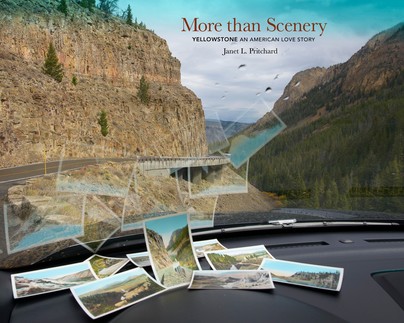
Format: Hardback
Pages: 240
ISBN: 9781938086953
Pub Date: 31 May 2023
Illustrations: 166 photographs, 4 maps, and 1 historic illustration
Description:
Janet Pritchard’s romance with the American West began with horseback riding, watching movies, and hearing her dad’s dreams of being a cowboy. When she began to spend adolescent summers in Wyoming during the 1960s, her world changed forever, as she fell under the spell of natural wonder in the shadow of the Grand Tetons. Only later did she recognize her feelings as a response to what nineteenth-century Romantics called the sublime.
A vintage 1916 picture postcard of Golden Gate Canyon by F. Jay Haynes inspired this project. When Pritchard turned it over and read the message – “I cannot describe the Yellowstone as the dictionary is only a book. It is more than scenery. In some places, it is so beautiful that the men take off their hats, and the women are silent!” – she was back in a childhood place of wonder tempered by a lifetime of work as an artist and teacher in landscape photography.Formed by fire and ice, embraced by a nation seeking an ancient past with a future as grand as the landscapes it inhabited, Yellowstone was established as the world’s first national park by an Act of Congress in 1872. One hundred fifty years later, the park and the Greater Yellowstone Ecosystem continue to occupy an iconic role in the public imagination of Yellowstone as a place that is both real and ideal. Here, in this complex ecosystem where wild nature and culture meet, the complexities of our relationship to the natural world are revealed unlike any other place.Yellowstone is truly unique, and each generation who visits it invests Yellowstone with ideas, beliefs, and values reflecting its historical moment. In More than Scenery: Yellowstone, an American Love Story, Janet Pritchard surveys these relationships with her captivating photographs and insightful text, and Lucy R. Lippard’ sets the table with her heartfelt introduction to the world’s romance with Yellowstone. This book reveals why Yellowstone is so important to American and the world and how its landscapes reflect more than scenery.
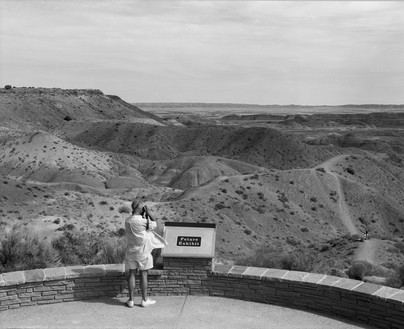
Format: Hardback
Pages: 104
ISBN: 9781938086946
Pub Date: 31 May 2023
Illustrations: 64 photographs
Description:
The National Park Service was established by an act of Congress in 1916 to “preserve unimpaired the natural and cultural resources and values of the National Park System for the enjoyment, education, and inspiration of this and future generations.” This directive to protect wilderness yet provide accessibility to it without somehow compromising the integrity of the natural resources seems to be a self-fulfilling contradiction and an arena for conflicting priorities.In Park Place, photographer David Heberlein explores the tension between access and enjoyment and preservation of America’s public lands.
From 1992 to 2019, he traveled throughout the American West and visited thirty-five national parks, monuments, and recreation areas. His stunning photographs, made in the course of his many journeys, document the human presence within the national parks and monuments of the American West. They allude to human influence both through the marks we make on the land – whether temporary or permanent – and through the presence of visitors who appear in numerous shapes and sizes performing a variety of familiar sightseeing activities. These shifting scenarios provide compelling photographic documentation of the multiple roles that national parks and monuments play and the ongoing need to balance the human impact on nature with the preservation of wild places.Park Place features sixty-four duotone photographs by David Heberlein along with an introductory essay by the photographer and an afterword. It promises to be a welcome addition to a longstanding tradition of artists, writers, and photographers heading out West to see and explore and interpret America’s national treasures.
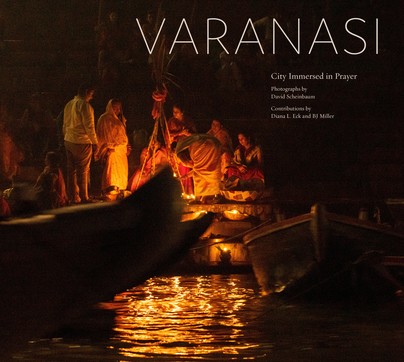
Format: Hardback
Pages: 160
ISBN: 9781938086960
Pub Date: 31 May 2023
Illustrations: 110 color photographs
Description:
Varanasi, also known as Kashi and Banaras, is a city in the northern Indian state of Uttar Pradesh dating to the 11th century B.C.E.
Regarded as the spiritual capital of India, the city draws Hindu pilgrims who bathe in the Ganges River’s sacred waters for prayer and ritual. In Varanasi, one is in a time warp where one is living in history as if time has never stopped, for the people, both residents and pilgrims, continue their daily practices and worship in ways relatively unchanged for millennia, a continuum of thousands of years. Being in Varanasi is like being on a thread pulled from a cloth that dates back to the beginning of time. Here, one doesn’t “see” a ruin, as one does in other ancient civilizations, but a living city where history hasn’t stopped. David Scheinbaum guides us, with his camera, through the city’s winding streets that are filled with thousands of shrines and temples at virtually every turn. He takes us on an incredible visual journey to the Ganges, the sacred river where bathers are in prayer, and to the funerary Ghats, steps that lead down to the river where cremations take place, filling the air with incense and burning pyres. Hindus believe that being cremated along the banks of the holy Ganges allows one to break the cycle of death and rebirth and attain Moksha, (salvation) making it a major center for pilgrimages. David Scheinbaum’s beautiful, soulful photographs present an ancient, holy city immersed in prayer. Woven through are the words of B. J. Miller and Diana L. Eck, noted scholars and writers who each shed light on the special qualities that make Varanasi the holy city it has always been.
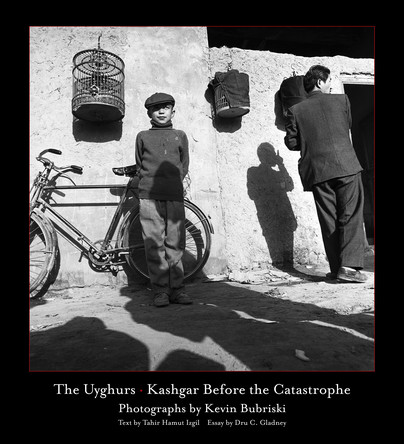
Format: Hardback
Pages: 248
ISBN: 9781938086991
Pub Date: 15 May 2023
Illustrations: 128 illustrations: 116 duotone and 8 color photographs by the author and 4 historic maps
Description:
In 1998, Kevin Bubriski was fortunate to spend time with the Uyghurs in Kashgar, their ancient city on the Silk Road in Xinjiang, China. While there, he made unforgettable photographic portraits and street scenes that reveal a haunting beauty and sense of the past in old Kashgar. Bubriski was drawn to the faces of ordinary people and their daily lives, with the intent that through photographs mutual understanding between people might be fostered.
Although 1998 was an uncomfortable time of rapid transformation for the Uyghurs, their oasis city in the high desert was still vibrant, even as the Chinese government’s brutal crackdown was about to commence. In the last few years, up to a million Uyghurs have been detained in “re-education camps” while others have been subjected to forced sterilizations and wider persecution. The vibrancy, beauty, and grit that Bubriski witnessed and photographed more than two decades ago has irrevocably changed. The Uyghur cultural, economic, familial, religious, and spiritual traditions are captured in Bubriski’s images and the extensive text by Tahir Hamut Izgil and the late Dru Gladney. These traditions, interwoven in Uyghurs’ lives and community for more than two millennia, have been severely impacted by the overt and disastrous policies of the Chinese government’s crackdown on Uyghur civil, spiritual, and cultural activities. The Uyghur community is now fractured and split due to widespread surveillance, mass detentions, and incarcerations. This book is also presented in a bilingual edition so that it is not only accessible to Uyghur people living in non-English-speaking regions of the world, but a way for Uyghurs around the world to reaffirm their cultural and social identity wherever they now live. As many Uyghur families are now separated due to detentions or flight to asylum elsewhere, the book is meant to be an enduring gift for the Uyghur people and for all who wish to understand better Uyghur culture and history. Bubriski’s book is a stunning work of art that reveals an earlier time when Kashgar, beloved city of the Uyghurs, retained much of its traditional life and charm.

Format: Hardback
Pages: 156
ISBN: 9781938086922
Pub Date: 31 Mar 2023
Description:
Climate change is the great existential reality of our time. How we approach this crisis will affect life on Earth for present and future generations. In spite of our collective ideals, irreversible damage to the environment is imminent and represents urgent local and global concern.
Through artfully rendered photographs of an acutely endangered landscape, Oceano: An Elegy for the Earth explores the deep paradox between the devout, powerful presence of nature and environmental loss and damage.Extending eighteen miles along Central California’s famed coastline and divided into both a natural preserve and a state vehicular recreation area, the Oceano Dune complex has long fascinated photographers such as Ansel Adams and Edward and Brett Weston. The ephemeral, ever-changing landscape here expresses a sublime order and reflects many correlations between land and the dynamics of human society. Using metaphors that inspire hope and explore impermanence and darkness contrasted with the purity of suffusing light, Ulrich’s photographs have been likened to Mark Rothko’s “silence and solitude” that express the resonance and subtle dimensions of consciousness.The coastal environment of the Oceano Dunes is tempered by multiple threats such as incessant motorized activity, the toxicity of surrounding industrial-scale agriculture, and some of the worst air quality in the nation. Thus, for the book’s sequence of images, the photographer employs the literary form of an elegy, an extended reflection and lamentation on Earth during the early twenty-first century. An elegy refers to a poetic reflection of sorrow and love, often for a transient, mortal entity. As Ulrich writes: “Sorrow and love for Earth, indeed. No better articulation exists for my regard for our dying planet and common mother.”
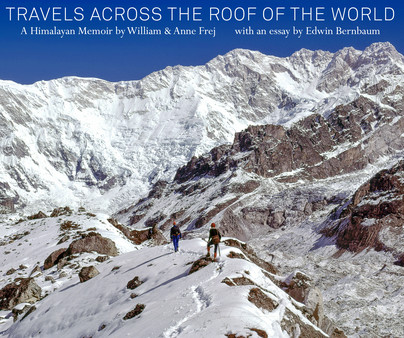
Format: Hardback
Pages: 280
ISBN: 9781938086939
Pub Date: 20 Oct 2022
Illustrations: 228 color photographs, 18 line art maps, 1 full-spread map
Description:
Travels across the Roof of the World provides a sweeping yet intimate view of the breathtaking peaks, splendid valleys, and extraordinary people of this vast region, from the Pamir Mountains in Kyrgyzstan through Afghanistan's fabled Hindu Kush, the Karakoram in Pakistan, and the Great Himalaya Range that stretches across northern India, Nepal, Tibet, and Bhutan. Unique in scope among photo books on the Himalaya, Travels across the Roof of the World chronicles William and Anne Frej's more than twenty pilgrimages throughout the area spanning forty years and 3,000 miles through some of the world's most remote and difficult-to-reach country. Inspired by the devotion to the practice of Tibetan Buddhism they encountered in the villagers they met on their first trek to Nepal in 1981, they set out on a quest to document Asia’s highest peaks as well as the lives of the resilient people living in these remote mountain communities.
When they began, trekkers from the West through these regions were few. Even now, trips are demanding - but not nearly as harsh as the daily lives of the residents, who continue to exist in a kind of stunning isolation that has allowed them to maintain the rich cultural traditions and spiritual practices that have sustained them over many centuries. Edwin Bernbaum’s essay adds to the depth of the pictures, with his focus on the symbolism, religious importance, and associated legends of these sacred places. The authors also share extensive vignettes about the places they saw and how they have changed over time.















